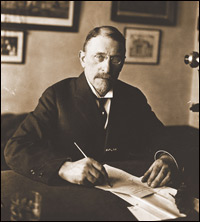For decades before they were the victims of genocide, Armenians living as a Christian minority in the Muslim-dominated Ottoman Empire were accorded second-class citizenship. It was against the law for them to carry weapons or ride horses. Their houses could not overlook those of Muslims. Testimony from Armenians was not admissible in courts of law — just as slaves and even freedmen in the 19th-century American South were barred from testifying against whites.
This official state discrimination opened the door to massive violence preceding the ultimate genocide. Between 100,000 and 300,000 Armenians were massacred in 1895. Another 15,000 to 30,000 were killed on a single day in 1909. When the Ottoman Empire entered World War I in 1914 on the side of Central Powers, its military and political leaders feared the oppressed Armenians would form a fifth column and collaborate with the Russians, who were pressing hard at the collapsing empire’s eastern edges. There is strong evidence that some Armenian men of fighting age did in fact take up arms against Turkish troops, fighting as pro-Russian guerrillas.
Armenian men enlisted in the Turkish army were disarmed and reassigned to labor battalions, and widespread propaganda began depicting Armenians as a collective threat to national security. On April 24, 1915, the Ottoman government imprisoned around 250 Armenian intellectuals and leaders. This marked the beginning of the genocide, which eventually resulted in the deaths of between 1 million and 1.5 million people. During the next six months, by government order, more than a million Armenians were forcibly deported and marched through the desert into Syria with little or no food, water or shelter. Others were herded into concentration camps and drowned, poisoned, burned to death or shot.

|
The documentary evidence of the genocide includes a 1915 telegram to a Turkish provincial official from Behaeddin Shakir, one of the leaders of the secret organization created to plan and carry out the genocide, which included death squads staffed by criminals released from prison for that purpose. “Are the Armenians, who are being dispatched from there, being liquidated?” Shakir wrote. “Are those harmful persons being exterminated, or are they merely being dispatched and exiled? Answer explicitly.”
Eyewitnesses to the genocide included Henry Morgenthau, the American ambassador to the Ottoman Empire at the time. “When the Turkish authorities gave the orders for these deportations, they were simply giving the death warrant to a whole race,” he said. “They understood this well, and in their conversations they made no particular attempt to conceal the fact.”
— David Holthouse



